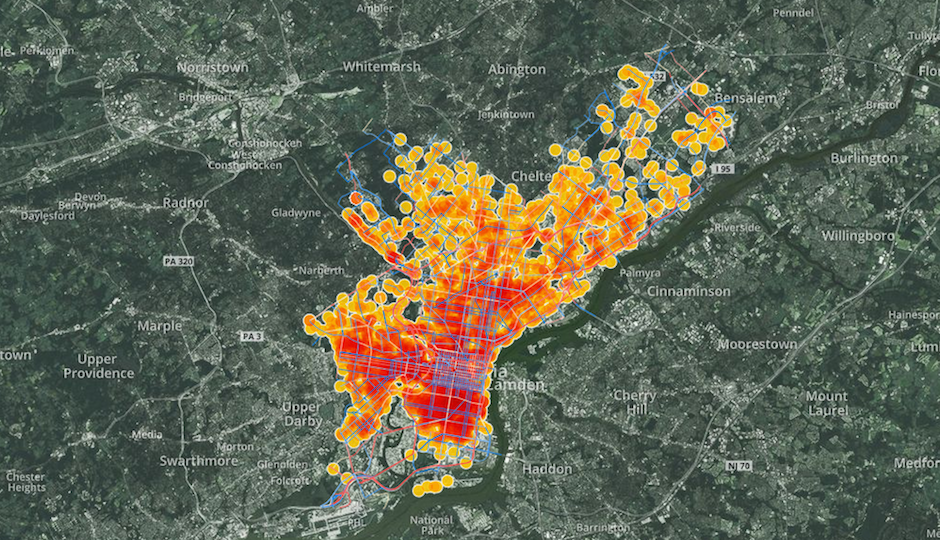There Were 551 Bike Crashes in Philly in 2014

Screen shot of Azavea’s map of bike crashes in Philadelphia from 2007 to 2012
Jay Mohan, a 26-year-old filmmaker, was biking on Girard Avenue in North Philadelphia early Sunday when he was struck by a Buick Roadmaster. Just a few hours later, he was pronounced dead at Hahnemann University Hospital.
Forty-five people were killed in bike crashes in Philadelphia between 1997 and 2014, according to statistics maintained by PennDOT. There were also thousands of non-fatal crashes in that period.
What can be done to put a stop to these accidents once and for all?
First, it’s important to note that city officials say that the number of bike accidents has actually dropped over the last two decades, even as cycling has increased. In 1998, a stunning 1,058 bike crashes were logged. Compare that with 2014, when there were 551 accidents reported.
“There’s safety in numbers when it comes to cycling,” says Andrew Stober, chief of staff for Mayor Michael Nutter’s Office of Transportation and Utilities. As more people bike, he says, “people driving cars start to become much more aware of bicyclists and start to expect them and look out for them.”
Still, Stober admits that 551 accidents are still 551 too many.
“The challenge for us is, how do we see that number cut by another half?” he asks. “It’s a complicated mix of engineering, education and enforcement.”
That means adding more bike lanes to the city’s streets, reminding cyclists to equip their bikes with lights and follow other safety precautions, and cracking down on drivers who speed and run red lights, says Stober.
Randy LoBasso, a spokesman for the Bicycle Coalition of Greater Philadelphia, has another idea. He says city government should adopt a “Vision Zero” policy, which establishes a goal of zero traffic deaths.
“We need to increase Philadelphia’s streets department budget and increase enforcement, as well as engineer better intersections, employ more red light and safety cameras across the city, connect the on-street bikeway network, and add more bike lanes and protected bike lanes in Philadelphia. We are falling far behind our peer cities,” says LoBasso.
“We believe these tactics have been shown to cut down on all traffic crashes in cities across the world that have employed them,” he adds, “and that crashes will continue occurring until the city government passes legislation that sets a goal of bringing the traffic death rate down to zero.”


